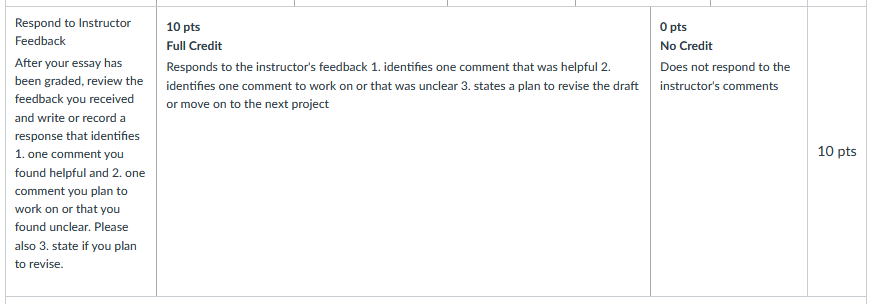As we approach the end of the first quarter of the 17-week semester and the middle of the 8-week semester (yikes!), I’m thinking a lot about how my students are doing and how they’re engaging with the reading and their writing.
A couple weeks ago in my asynchronous ENGL 202, I posted a short video of me talking about “critical thinking,” and below, I embedded this google doc asking students to share what comes to mind when they think about “arguments.” At the end of the week, I embedded a wordcloud generator that asked students to share “where you’re at” as they wrapped up the week.
This week, I’m reading and responding to the first set of essays submitted in my asynchronous ENGL 100. One category in the rubric asks students to respond to my comments after I’ve graded their essay. I don’t mark that category until they respond. When they do, they get 10 more points, and I get a chance to have an asynchronous conversation with them about their writing.

Hearing from my students in these different ways–sharing their knowledge as I introduce a new topic, sharing their confidence and uncertainty at the end of a busy week, and sharing their questions and goals about their own writing in response to my feedback–not only fosters a sense of comradery and belonging in the class, it allows me to value my students as collaborators and leaders in our shared learning experiences and writing processes.
So, how are you hearing from your students right now in Canvas, in Zoom, and in other ways? Below are a few ideas to consider, and if you would like, please share more tips and tricks here.
Hear from your students
This is a great moment in the semester to check-in with our students to get the pulse of the class. How easily are students finding things? Is the pace of assignments nuts, too easy, or intriguingly steady? Is there anything are students feel we could be doing that we aren’t doing yet to make participation more accessible and engaging?
Share the results
Hearing from our students is so valuable to our teaching. Sharing back what we hear from them with the class can be equally valuable to their learning.
Embed StuffMost tools offer an embed code option with the < > symbol. If they don’t, you can use this html code to embed just about anything, even editible Google Docs! To embed the results of Google Forms, you can follow this dorkey tutorial.Curate StuffMany of us create class playlists from the content students share. Make a regular place to spotlight student generated conctent in your weekly announcements, your instructional content, and your Zoom meeting activities.
Listen, lighten, and illuminate
Creating and managing formative feedback loops in my composition classes is THE ultimate goal. Sometimes these channels of communication are critical to the work of revision, and some time they are just plain necessary to helping each other get through challenging moments.
Incentivize Responses to Your Feedback
- Offer extra credit
- Make responses worth points
- Use the Requirements options in Modules to lock content until students post a response to your feedback
Create Ticket-out Activities (totally stole this from Chad)
- Ask “muddiest-point” questions at the end of a module
- Ask affective questions at the end of the week
- Share the results just-in-time
